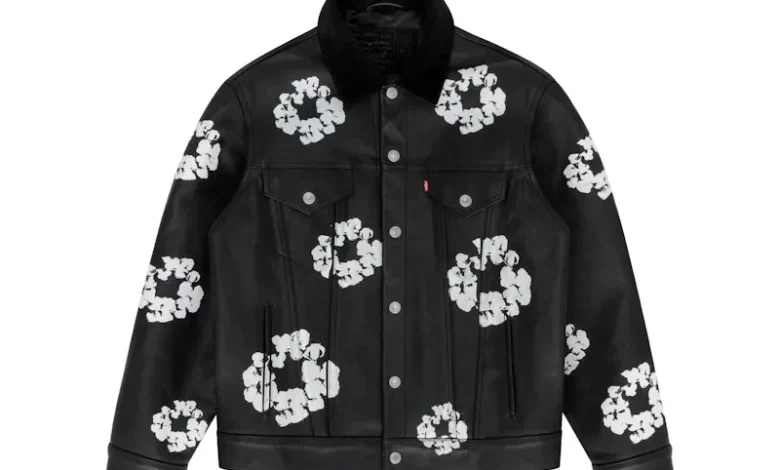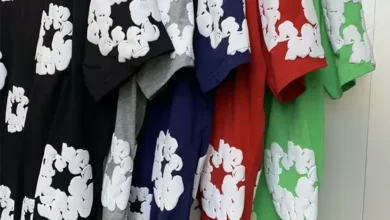Colonial Threads and the Metaphysics of Denim Tears Rebellion

Denim, once a symbol of labor and durability, carries threads woven through centuries of exploitation and colonial expansion. The cotton that birthed denim was harvested by enslaved hands under imperial regimes, embedding pain into every fiber. As denim traveled from plantations to factories, it became a silent witness to empire’s machinery. Today, brands like Denim Tears reinterpret this fabric—not as a commodity of oppression but as a canvas for memory. The story of denim, therefore, is not merely sartorial; it’s an ongoing dialogue between material, history, and resistance that confronts colonial residues stitched into modern fashion.
Cotton as a Colonial Commodity
The global cotton trade was the lifeblood of colonial capitalism, intertwining plantations, factories, and profits with Black and Indigenous suffering. From the American South to India’s deindustrialized looms, cotton became a tool of domination disguised as progress. The Empire clothed itself in moral superiority while dressing its expansion in “white gold.” Denim, born from this web, embodies contradiction: both a tool of enslavement and a fabric of freedom. Understanding denim’s origins in cotton’s imperial circuits is essential to grasp the metaphysics of rebellion embedded in its texture—a resistance to the very systems that birthed it.
Denim Tears and the Poetics of Resistance
Denim Tears, founded by Tremaine Emory, transforms clothing into an archive of trauma, resilience, and spirituality. The brand’s pieces—often printed with cotton flowers or references to African diasporic symbols—function as wearable essays challenging colonial amnesia. Emory’s designs confront fashion’s sanitized narratives, forcing audiences to see denim not as trend but testimony. Each garment reclaims agency for the descendants of those who labored in cotton fields. Through this poetic rebellion, Denim Tears stitches aesthetics to politics, merging creativity with critique. The result is a metaphysical act: liberation through fabric, remembrance through style, resistance through beauty.
The Metaphysics of Fabric and Flesh
In the metaphysical reading of Denim Tears, fabric becomes an extension of flesh—a second skin carrying ancestral memory. The act of wearing denim transforms the body into a site of historical reclamation. Threads become veins through which collective pain and power circulate. Colonialism once dictated who could wear what, turning clothing into a hierarchy of value and visibility. By recontextualizing denim, Emory restores dignity to the dispossessed body, making fashion a sacred rite of remembrance. The metaphysics of denim, thus, lies in its duality: both scar and salve, both oppression and transcendence.
Rebellion as Aesthetic Practice
In the universe of Denim Tears, rebellion is not loud—it’s woven. The stitches, prints, and textures resist through subtle defiance rather than spectacle. Each piece asks: what does rebellion look like when expressed through cotton instead of chains? By embracing the very materials of colonial control, Emory transforms them into instruments of liberation. Aesthetic rebellion becomes philosophical—a reclamation of agency through design. The act of wearing becomes political participation, turning the runway into a battleground. Here, art refuses neutrality; style becomes protest, and protest becomes an act of spiritual metamorphosis.
Diaspora, Memory, and Materiality
Diasporic consciousness animates Denim Tears’ rebellion. The African diaspora carries not only displacement but also creative reinvention, visible in how denim is reimagined as both heritage and critique. Materiality and memory intertwine—cotton, pigment, and pattern become mnemonic devices. Through these fabrics, history breathes again, refusing erasure. Emory’s designs collapse geography and time, connecting enslaved ancestors with present-day Black expression. The garments narrate stories unspeakable in textbooks, transforming trauma into art. This dialogue between memory and materiality positions Denim Tears as a philosophical bridge between worlds—where pain is not hidden but honored through creation.
Capitalism, Culture, and Counter-Narrative
Fashion, under capitalism, often thrives on appropriation and erasure. Denim Tears intervenes in this economy by reasserting authorship. The brand’s imagery—cotton wreaths, religious iconography, political symbols—challenges the consumer to reckon with the exploitation beneath the glamour. It exposes how culture industries profit from Black aesthetics while ignoring Black suffering. By turning commerce into critique, Denim Tears destabilizes capitalist comfort zones. The garments sell, but they also speak, insisting that consumption must confront conscience. This counter-narrative transforms capitalism’s stage into a site of reflection—where buying becomes an act of acknowledgment, not amnesia.
The Sacred in the Everyday
Denim Tears elevates the mundane—jeans, jackets, tees—into sacred artifacts. Through symbolism and storytelling, Emory infuses everyday garments with spiritual depth. The sacred emerges not from luxury but from lived experience, from the resilience of those who endured and created under duress. This re-enchantment of the ordinary challenges Western hierarchies that separate art from life, divine from domestic. Wearing Denim Tears becomes ritualistic—a form of ancestral communion. Each piece whispers prayers of survival and transformation. The brand invites us to see sanctity not in distance but in the daily fabric that binds us all.
Colonial Threads Unraveled
To unravel colonial threads is to expose the myths that hold modern fashion together. Denim’s popularity rests on forgetting its brutal past, yet Denim Tears insists on remembrance. The rebellion here is intellectual as much as aesthetic: dismantling the colonial logic that devalues Black creativity while commodifying its symbols. Emory’s work asks us to unlearn comfort and confront complicity. The unravelling becomes generative—it makes space for new stories, new fabrics of belonging. Through Denim Tears, colonial threads don’t simply fray—they transform, weaving resistance and remembrance into the future’s sartorial DNA.
Toward a New Fabric of Liberation
Denim Tears envisions liberation not as abstraction but as tactile, Denim Tears Hoodie wearable philosophy. Its rebellion is neither nostalgic nor nihilistic—it’s reparative. By transforming colonial materials into spiritual statements, the brand offers a blueprint for healing through art. Liberation, in this vision, is a fabric continually rewoven, a collective act of remembering and remaking. The metaphysics of Denim Tears teaches that rebellion need not destroy to create; it can also stitch, mend, and adorn. Through every seam and story, the brand reminds us that true freedom begins where we dare to rethread history itself.



